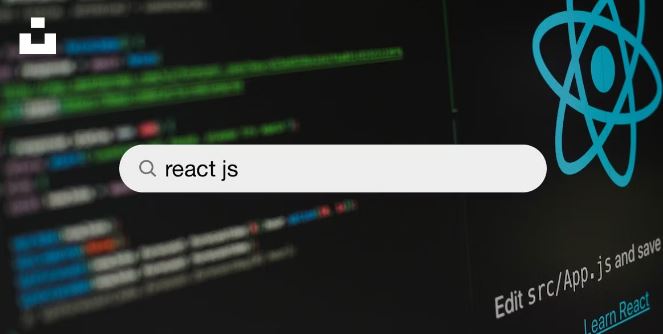
The Rise of React.js
React.js was created by Jordan Walke, a Facebook software engineer, in 2011. Initially developed to address Facebook's need for a high-performing and dynamic user interface, React.js has now surpassed jQuery as the most commonly used web framework. In Stack Overflow's annual Developer Survey, React.js was cited as the most "wanted, desired" framework by one in four developers.
The X-Factor: What Makes React.js Popular?
React.js offers a more intuitive way to build dynamic web pages, making them responsive and engaging for users. It is an open-source JavaScript library that leverages advanced-level JavaScript concepts. Let's delve into some key features that distinguish React.js from other frameworks and contribute to its popularity.
- Components: The Building Blocks of React.js Components are the basic building blocks of React.js. Developers can create small, reusable, independent components that have their own sets of properties and functions. These components can be combined to form larger UI parts, making the code reusable and easier to maintain. The use of components also enhances the overall development process, as debugging becomes more accessible.
- JSX: A Powerful Markup Language JSX is an HTML-like markup language for React.js that produces React elements. It allows developers to describe the UI using a mixture of HTML and JavaScript. This accelerates development time by converting HTML tags into React elements. JSX enables the interpretation of JavaScript expressions and statements within curly braces, enhancing the flexibility and power of React.js.
- Virtual DOM: Enhancing Efficiency React.js introduces the concept of a Virtual DOM, which is a lightweight version of the actual DOM. The Virtual DOM compares the current Virtual DOM tree to the new Virtual DOM tree and only updates what has changed. This process, known as reconciliation, updates the actual DOM more efficiently, resulting in enhanced UI performance. React.js also batches changes, allowing multiple changes to be made simultaneously for improved efficiency.
- Class-Based and Functional Components React.js supports both class-based and functional components. Class components are JavaScript classes that extend the React.Component class and have a render method to build and return the UI. On the other hand, functional components are simple functions that return the UI. This flexibility allows developers to choose their preferred approach based on their coding style and project requirements.
- The Power of React Hooks React Hooks revolutionized the way developers work with React.js. Hooks simplify complex tasks such as re-rendering the UI, managing state, and interacting with the DOM. With hooks, developers can easily update component state and trigger re-renders when necessary. React provides a wide range of built-in hooks, and developers can even create their own custom hooks for specific use cases.
Making Websites More Dynamic and Responsive with React.js
React.js enables the development of Single Page Applications (SPAs) where all the front-end code for the website is downloaded locally. This approach minimizes server requests and speeds up page rendering. React-Router, a popular React.js library, handles navigation in SPAs, allowing smooth transitions between views without reloading the entire page. In addition to React.js itself, there are numerous existing libraries that enhance the functionality of React.js. For example, Material UI provides multiple ready-to-use components, Redux offers state management capabilities, and Formik simplifies form building and management. These libraries expand the capabilities of React.js, making it a versatile and powerful framework.Learning React.js: A Worthwhile Investment
Learning React.js is a valuable investment for both aspiring and experienced developers. With its small learning curve, React.js is accessible to JavaScript developers of all levels. Beginners with a foundation in JavaScript will find it easy to get started, while seasoned developers can leverage numerous online resources and communities to deepen their knowledge. To learn React.js effectively, developers can start with JavaScript fundamentals and then explore React.js-specific concepts. Online bootcamps, instructor-led courses, and community forums provide valuable learning opportunities and foster collaboration among developers. Joining the active and supportive React.js community is also highly recommended for continuous learning and problem-solving.The Strong Community and Future of React.js
React.js boasts a robust community of over 100 million developers worldwide. With the support of Facebook and countless open-source contributors, React.js continues to evolve and adapt to the changing needs of the web development industry. Its popularity and widespread adoption make it an attractive skill for job seekers in the tech market. As the web development landscape evolves, React.js remains at the forefront of cutting-edge technologies. Its extendability allows seamless integration with other JavaScript libraries and frameworks, further expanding its capabilities. Frameworks like Next.js and Gatsby, built on top of React.js, offer additional features and functionalities, catering to specific development needs.Conclusion
React.js has revolutionized web development, providing developers with a powerful and flexible framework for building dynamic and responsive user interfaces. Its key features, including components, JSX, the Virtual DOM, class-based and functional components, and React Hooks, offer a comprehensive toolkit for creating efficient and engaging web applications. Whether you are a beginner or an experienced developer, learning React.js is a worthwhile investment that opens up a world of opportunities in the web development industry. Embracing React.js and its vibrant community enables continuous growth and empowers developers to create exceptional user experiences. So, why wait? Dive into the world of React.js and unlock the potential for innovation in web development.Tweet of the Day:
>Vue.js - A Graceful And Reliable Queen 👸#DEVCommunity #ReactJShttps://t.co/yJZpaSojkD
— The React Dev (@The_React_Dev) August 18, 2023
React Course - Beginner's Tutorial for React JavaScript Library [2022]
Learn React by building eight real-world projects and solving 140+ coding challenges. You can also follow this course interactively on Scrimba: https://scrimba.com/learn/learnreact React is one of the most popular front-end JavaScript libraries for building user interfaces. After completing this course, you will be able to build web apps in modern React, using patterns like functional components and hooks. ✏️ This teacher is Bob Ziroll, Head of Education at Scrimba. Code is available on the Scrimba course page for each lesson. Scrimba on YouTube: / scrimba Bob on Twitter: https://twitter.com/bobziroll
